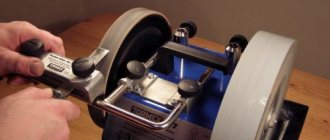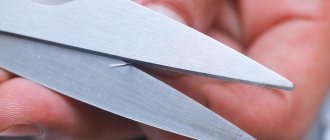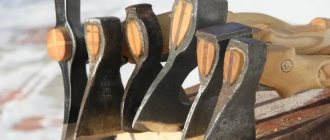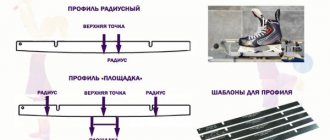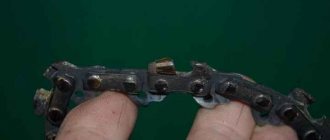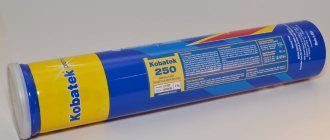Dull ice drill knives have one advantage: fruitless attempts to drill through the ice prevent you from freezing. And jokes aside, every fisherman secretly dreams of learning how to quickly and easily sharpen ice drill knives. Sooner or later they all get stupid. And very often this happens at the most inconvenient moment. There are several ways to solve the problem.
Ice ax structure
An ice ax is not a clever device for cutting through an opening. It consists of three parts: the auger, the cutting mechanism and the handle. In order to make a hole, the fisherman turns the handle, and the knives are screwed into the ice.
Some fishermen, particularly distinguished by their imagination, improved this device by equipping it with a motor. This increases the speed of ice drilling.
The auger ice drill has become worse at drilling ice
It happens that when fishing, an auger ice drill starts to drill worse into the ice.
The most likely reason is that you have just driven the blades of an ice auger through thick ice with sand applied to it at the beginning of winter.
Another most common reason why an auger ice drill begins to drill worse when entering ice is a change in space in the plane of one or both knives if the fastening on the bevels of the landing sites has become loose.
For the simplest example, let’s assume that on only one knife, on the bevel of the contact pad, the screws unscrewed evenly into two threads, that is, without distortion of the cutting edges, and let’s figure out why the auger ice drill will begin to drill into the ice worse. Although all the screws can unwind in any way, creating a variety of combinations of knife distortions.
In our case, the water frozen in the resulting gap will also lower the blade by two millimeters in relation to the plane of the other knife, which ceases to reach the plane of the ice. Naturally, an auger ice drill with one knife begins to drill holes worse.
Here are several reasons why the knives of auger ice drills begin to drill into ice worse. They can be eliminated directly during winter fishing either by replacing the knives and then securely locking them with screws, or by simply straightening the cutting edges with a diamond-coated stone.
But there is another completely wild reason why an ice auger begins to drill worse into ice, which by definition should not appear in a normal fisherman.
This is when we try to unscrew the auger of an ice drill frozen into the ice using rocking. On how you can rescue an auger ice drill from ice captivity without causing harm to your mind, material is given on the subsequent pages of the topic.
But if we have already managed to bend the longitudinal axis of the auger ice drill at the junction of the landing pad of the knives and the pipe, then in order to improve the operation of the drill when drilling holes in ice, we have to resort to some tricks.
Types of knives
Since ice differs in its structure, it requires different types of ice ax blades.
There are different types of blades:
- Flat blade, equipped with straight sharp parts;
- Stepped blade, equipped with two cutting parts;
- Serrated blade;
- Triangular blades.
An ice ax with a triangular blade is ideal for drilling through loose ice. For frosty days and for cutting dry ice, an ice ax with a flat blade is suitable. For stronger ice, a stepped blade is suitable.
Before you start sharpening knives, study their structure. They smoothly transition from the wide part to the sharp tip. The sharpening angle of ice ax knives should not deviate from 30 degrees. To keep the knife sharp.
Knife sharpener
Fans of running (search) fishing often choose something between a touchstone and a machine tool - an ice drill knife sharpener. It allows you to adjust the sharpening angle and make precise movements. The risk of error is minimal. A sharpener can be used to sharpen any cutting tool. The device costs about 4,000 rubles.
What sharpening looks like in practice:
Equipment for sharpening ice ax knives
As mentioned earlier, for proper sharpening it is necessary to maintain an angle of 30 degrees. But it is not so easy to maintain it constantly without an ice ax sharpening device.
To sharpen an ice ax with your own hands you will need:
- Sharpener. It can be purchased complete with instructions at a fishing store.
- Carborundum stone. You need to acquire stones with different formations, from the largest to the smallest.
- Sandpaper. After sanding the knives, small indentations remain, which can be easily removed with fine sandpaper. For more serious recesses, use finer sandpaper. After which the surface is treated with felt.
- GOI paste and glass. You can sharpen knives using a glass bottle; just run the knife along the end of the bottle a couple of times, and give them their original appearance using paste.
Sharpening Tools
To sharpen knives with your own hands, you need to buy in advance a special device for holding one corner and other tools:
- A special sharpener. In a store that sells ice axes, you can ask about similar tools and instructions on how to use them.
- Abrasive bars. It is necessary to purchase carborundum stones of different grain sizes in advance. It should have wide working surfaces. When sharpening, you should constantly wet the surfaces of the stones. You need to start with a large grit and end with a fine one.
- Sandpaper. It is suitable for correcting minor irregularities and bringing the blade to working condition. To repair gross damage, you can use coarse sandpaper. After sanding, scratches will remain on metal surfaces. They are removed with felt.
- GOI paste, glass. The simplest options for sharpening blades. If using a glass jar, you need to run the blade over its surface several times to restore sharpness. You can use glass bottles instead of jars. The blade must be drawn along the end of the neck. Using GOI paste you can give the metal a characteristic shine and make the surfaces mirror-like.
Resharpening cutting edges with an abrasive stone:
- Place the block on a rubber plate so that it does not slide to the side during use.
- For additional fastening, you can use tape.
- Remove rough burrs and chips with a file.
- Turn the part over with the cutting part facing the abrasive stone and set the angle. To do this, it is more convenient to cut the cardboard at an angle of 30 degrees in advance. Perform even circular movements with gentle pressure.
When regrinding, you need to constantly check how accurately the edge is processed along its length. After carrying out the work, you need to run the blade over the paper to check its sharpness.
Craftsmen use grinders and grinders for sharpening, but these tools are dangerous for beginners and require practical skills.
Sharpening tool (Photo: Instagram / studiosharp.ru)
Sharpening knives using an abrasive stone
You need to place the block on the rubber surface and additionally secure it with tape. This is necessary for reliable fixation and to improve the sharpening effect.
Additionally, cut the cardboard at 30 degrees, since the knife must be sharpened at this angle. The knives must be positioned with the cutting part to the block and with small twisting movements, applying light pressure, periodically check whether you are sharpening correctly. Check the sharpness on paper.
Do blades need to be polished?
Often, after the sharpening process, unsightly scratches from a whetstone, sandpaper or sharpening wheel remain on the metal surface of the knife. At first glance, they do not have any effect on the efficiency of the tool. However, an unpresentable appearance is far from the only drawback of a scratched knife. During operation, the uneven surface of the metal catches on the ice, which leads to increased wear of the tool and complicates the drilling process. Therefore, experienced fishermen always recommend grinding the metal surface to a mirror shine after sharpening the cutting edge.
Sharpening technique
Some experienced fishermen use a grinder and a grinder for sharpening, but it is important to remember that these tools are dangerous for beginners.
- Electric sharpeners are used to sharpen the edge of an ice ax at home. To use them you must adhere to certain rules.
- It is necessary to constantly moisten the stone with water, since friction heats up the working surface. Overheating reduces the strength of knives.
- You need to purchase an ice ax sharpening device that will allow you to maintain the same angle.
- Sharpening must be carried out at low speeds; at high temperatures, heating of the cutting surfaces occurs, which leads to a deterioration in the strength of the metal.
- For beginners, you need to practice sharpening on metal discs.
- A machine for sharpening ice axes requires the following operating technique:
Before you start working on the machine, you need to process the edge with a file, remove all irregularities, nicks and chips. Place the knife at an angle of 30 degrees from the work surface. Bring the edge to the required sharpness, turn the knife over and repeat the procedure. Check the sharpness of the knife using paper.
You can make such machines yourself or purchase them in a store. It is necessary to purchase machines that have a speed control function.
Sharpening angle
The main rule for sharpening any tool is to maintain the factory sharpening angle.
Beginners often neglect it. Sharpening the entire plane of the edge takes much longer than simply chamfering the edge. As a result, when chamfering alone, the factory sharpening angle is violated. After just 1-3 procedures, the knife becomes completely unusable.
We recommend: How two girls can move furniture in an apartment without damaging the floor and without overstraining themselves
When sharpening Leningrad Bor knives, a sharpening angle of 30 degrees is usually maintained.
If the angle is made sharper, the drill will bite into the ice better. But it will also become dull at a catastrophic speed. In addition, a thin edge is more fragile. It is easier for nicks to form on it from frozen grains of sand and pebbles.
You can set the desired angle on a cross-cutting machine, which is used to install doors.
Craftsmen often make their own devices for maintaining the angle. A permanent marker is also used for these purposes. They are used to paint the metal that needs to be removed.
Specifics of sharpening different knives
It is easiest to sharpen straight knives; the main thing is to adhere to the above steps, do not press too hard on the blade, and constantly cool the working surface.
Step knives need to be sharpened, given that they have two cutting surfaces that require separate sharpening. After the procedure, it is necessary to check the sharpness of both cutting surfaces.
In order to sharpen rounded knives yourself, you need skills in this regard. Movements must be made smoothly at a constant speed. Too slow will lead to heating of the cutting part of the metal and its damage. Too fast movements due to their intensity will damage the cutting surface.
- In order for ice ax knives to serve you for a long time, it is necessary not only to periodically resharpen the knives, but also to properly care for them.
- Knives must be stored in a dry place without exposing them to moisture.
- Since metal located in a damp place undergoes corrosion and loses its functionality.
- After each use, it is necessary to wipe and clean the knives.
- It is better to place them in a dry box, after wrapping them in a cloth slightly moistened with oil.
Proper care and sharpening of knives will allow you to prolong their functionality.
Sharpening the edges of drill knives on a block
Self-sharpening the edges of auger ice drill knives on an abrasive block (or wheel) is associated with one unpleasant moment. On the working surface of the block, even after sharpening the knives once, the plane becomes bent.
As a result, on the tip of each knife of the auger ice drill, the sharpening angle of the very edge of the cutting edge changes very slightly. With each subsequent sharpening on the block, this angle will only increase and not necessarily the same on each ice drill blade.
With rare exceptions, changing the sharpening angle of the cutting edge, if the knives are purchased complete with an ice auger, will lead to a deterioration in the work of the fisherman's assistant in winter fishing conditions.
As for the exception, perhaps after repeated sharpening on an abrasive block with an uneven surface, the ice drill knives will stop “biting” into the ice in the thaw, but will begin to drill worse during winter fishing in frosty weather.
If necessary, you can sharpen the knives for the auger ice auger on an abrasive stone immediately before going on winter fishing using a simple method that I have been using for many years.
True, it is more convenient for me to sharpen the knives of an auger ice drill not on a block, but on an abrasive wheel, but the sharpening technique is the same. In both cases, we first align the plane of the abrasive wheel or bar.
If you do not have an abrasive block or wheel, then the method of sharpening the edges of ice drill knives for the upcoming winter fishing using fine-grained sandpaper is suitable.
Photo of sharpening an ice drill
Ice auger blade angles
Before we figure out the angles of inclination of the auger ice drill knives, let's think about how they are formed.
The mounting platform for each knife on the ice drill has a bevel, both in narrow size and in length.
It is the angles of the bevels of the planes of the landing areas that set the inclinations of the ice auger knives in two directions, on which the working qualities of the ice auger depend.
When handling fishing equipment correctly, the angles of inclination of the ice auger knives on the landing sites should not go anywhere.
And, if over time the quality of drilling holes with an auger ice drill significantly deteriorated due to the deviation of the angles of inclination of the ice drill knives when entering the ice, then this could only happen in one case - if we ourselves forcibly managed to change them.
The worst case of changing the inclination angles of the ice drill knives relative to its longitudinal axis is a misalignment of the blade mounting area at the welding site with the pipe, which in most cases occurs when the ice drill is not used correctly.
Many of the fishermen have probably seen how someone, knocking off ice, forcefully knocks an ice auger on the ice or on a snag protruding above it.
It happens that fishermen pull out an ice screw from a hole with water that has fallen and frozen in it using a rocking motion. These are the most likely reasons contributing to changes in the angles of inclination of the ice auger knives when they enter the ice. How to remove an ice screw frozen in ice
On my Leningrad ice drill with a thick pipe, back in Soviet times, a weld seam burst, after which only the craftsmen at the factory could bring it to fruition. Before this, a housing office welder tried to fix the drill.
We sharpen ice drill knives
V. Sokolov
Judging by the noticeable decrease in the activity of Internet discussions about the choice of brand and type of ice drill, most fishermen have already made a choice, and, perhaps, have already become the proud owners of domestic or imported ice drilling units. But along with the purchase of a much-needed tool for winter fishing, they also acquired a small “headache.” And the magnitude of this “pain” is inversely proportional to the skills in using a sharpening tool: the fewer skills, the stronger the “pain”, alas...
First, I want to remind you of a simple truth: there are no miracles in the world. And I attribute this primarily to the work of foreign ice augers: although beautiful, elegant and ergonomic, an imported device does not always, unfortunately, meet the expectations of those who first purchased it. And the results of numerous tests allow us to state quite definitely that any “foreigner” loses to a SPECIALLY TRAINED
to a domestic product of a similar purpose both in terms of speed and the number of required revolutions. And the “foreigner” has only one benefit - the overall load on the fisherman is less due to the more uniform work of both hands.
A little theory
But what is “specially trained”? Without going particularly into the theory of processing materials by cutting (this is the process we carry out when drilling holes in ice), we can say that the main role in ice drilling is played by the set of angles - sharpening and installation - of the ice drill knives. By varying the magnitude of these angles, we can obtain different properties of the tool, depending on the physical state of the ice. And this is largely typical for domestic ice drills.
In imported models, the cutting edge of the knife has a complex curved shape, and the angle of attack on such knives (or on the cutting head - the Finnish version) that varies along the length of the blade allows them to work almost equally in both soft (at a temperature of about 0 ° C) and on hard ice (when the air temperature reaches minus 20 - 25°C and below), i.e. Depending on the hardness of the ice, different areas of such blades work most effectively.
True, manufacturers of imported ice drills provide for slight adjustment of the position of the blades on the tool - the holes on the platform have a larger diameter than the screw securing the blade. And depending on the hardness of the ice, it is possible, by changing the angles of the blade on the platform, to regulate the speed of cutting the ice within small limits. But all the same, it turns out that initially such a device was conceived as universal - for any ice.
If we analyze the work of our ice drills, it turns out that they are optimal only in a small temperature range. Considering that the softest ice is at 0°C, we can say that domestic designs with a flat blade are designed for such viscous ice. When comparing a domestic ice drill in these ice conditions with a foreign car having similar parameters, it turns out that ours is ahead. Moreover, with a clear advantage - both in terms of the time it takes to “climb” the hole, and in the number of required revolutions. But it loses in the softness of movement when drilling, and this is especially noticeable in the last, spring, ice that has already been washed away from below - in the almost complete absence of biting when entering the water.
Now let's continue the comparison under conditions of decreasing air temperature. “Our” ice drill will gradually lose its advantages. And in the region of minus 8 - 12°C, the competition in the speed of penetration will end with almost the same results. But at the same time, the advantages of a foreign car (more comfortable to drill) will remain. If you continue testing with a further decrease in temperature, then the lag of flat knives will increase. But you should not see only a negative aspect in this test. And if a domestic ice auger is specially prepared for each fishing trip (on the issue of angles) - depending on the condition of the ice on the reservoir - then the “Scandinavians” will not be able to catch up with it.
Ice auger selection criteria
Now that we’ve sorted out the design ideas, let’s consider what criteria should be used to select an ice drill.
The first criterion is the fish you plan to catch. If a drill is selected for smelt or, say, rotan in park ponds, it makes sense to choose it with a minimum cutting block diameter. Domestic manufacturers produce drills with a minimum size of 100 mm, while Scandinavians produce drills with a minimum size of 70 mm on certain models. If you plan to catch bream or pike, it makes sense to take 150 - 180 mm or more.
Among domestic products for this task, there are quite worthy offers from Barnaul manufacturers. The Scandinavians also have several models with the same parameters. The most common - and universal for most fishermen - are ice drills with the ability to drill holes with a diameter of 120-130 mm.
The second criterion is the thickness of the ice. You need to know its maximum value for your region. For example, in Ladoga and the Gulf of Finland this value in rare years exceeds 95 - 100 cm - and all domestic and most imported ice screws are quite suitable for our ice. If the average ice thickness exceeds a meter, the domestic manufacturer has a special option for either an extension extension or ice drill elements of increased length. Telescopic extensions have already appeared. For imported manufacturers, such transformations of ice screws are initially built into the design.
Well, an important criterion is the price of the product. Foreign cars are more expensive than our steel structures, but, in turn, the domestic “titanium” is priced noticeably higher than the most “sophisticated” foreign cars. And it’s no secret that thanks to the significantly lower weight and almost unlimited service life of the most advanced titanium models, they ultimately occupy leading positions in the arsenals of winter fishermen.
But still, the most important criterion for the quality of work of any ice drill is the knives. The fisherman’s opinion about the product as a whole depends on the quality of their manufacture and sharpening - whether the drill drills or not.
What affects the quality of drilling?
The quality of drilling depends on a number of factors. What are they and how do they affect the operation of the ice drill? Let's start with domestic products. With the exception of Barnaul, all manufacturers use approximately the same type of blades - as a rule, purchasing them separately: such blades are already installed on the finished product. I must note with regret that at these enterprises the incoming control does not always work reliably, which should cut off low-quality products even before they are put on the ice drill. What do I mean by low-quality products?
1. Insufficiently hardened blades.
Once upon a time, in ancient times, there was a standard (GOST) that determined the hardness of this product to be no worse than 54 - 56 units on the HRC scale (Rockwell hardness scale). Now the range of values can be from 30 to 58 units. It is clear that at the lower limit the blades are good for nothing - they are just raw structural steel that will “shrink” after the first 2-3 holes even in clean, sand-free ice.
The upper limit of 57 - 58 units is also not always a super offer: not all steels used for knives can be hardened to these values with impunity - overheating is possible.
And then such a blade will simply crack in the cold at the first turns of the ice drill. Is it possible to eliminate deliberate defects at the purchase stage? Partially yes. To do this, you need to take a file or needle file with you to the store and try to process the blade a little.
Naturally - not the cutting edge, but the non-working part. The file should slide, leaving virtually no marks. It will noticeably saw through raw steel. But overwork cannot be determined so easily - only by crumbling of the cutting edge and other major damage, alas.
It is also necessary to carefully examine the cutting edge for the presence of so-called “discolorations” resulting from a violation of the thermal regime during machine sharpening of blades.
2. Failure to maintain the correct blade shape.
The blade must have TWO cutting edges! Only in this case, and provided that it is well sharpened, will the drill grab ice immediately after installation, literally with the slightest turn of the handle. The presence of one edge on the blade will not allow it to reliably cut into the ice - and the drill, describing a complex trajectory, will tend to “run to the side” rather than drill a hole.
3. Dull blades.
If the test with a file left no doubt about the hardness of the steel, both cutting edges are in place and there are no “tarnished colors” on them - this is an easily correctable situation. The sharpening quality test is very simple: take the blade in one hand and a sheet of newsprint in the other (photo 1). When moving mutually, the blade should cut the paper under its own weight. If it cuts, everything is fine, you can go fishing with such blades. If not, sharpening is necessary.
Selecting spare blades
More on sharpening options below, but for now here’s a short digression. When buying a domestic ice screw, it is advisable, in my opinion, to immediately buy a spare set of blades, or maybe a pair. And so that on the ice you don’t feel offended by a hasty purchase, it makes sense, firstly, to check the conformity of the shape of these blades by folding them. And, secondly, look carefully to see if the mounting holes for fasteners on the ice drill platform and on the additional blades match.
A fairly large selection of blades of various shapes has appeared on store shelves, which in itself is not bad. In addition, the price tags of some samples indicate steel grades (though they mean absolutely nothing to the vast majority of fishermen).
Let's try to figure out which form to choose. Designers vying with each other to prove that their knife shape and cutting edge are the best. Practice shows that well and correctly sharpened blades of different shapes on the same ice drill under the same conditions show approximately the same results. Then the only selection criterion will be the convenience (!) of self-sharpening.
Knife material
Now a few words about the material, and is it sometimes worth paying a lot of money for a not entirely clear combination of letters and numbers of markings? In practice - no, it is not necessary, with the exception of two versions.
Knives made of P18 steel (this is one of the most common grades of steel, classified as high-speed tool steel). Analogs - P9, P12, P6M5K5. Such blades appeared on store shelves last year, but when purchasing, you need to pay attention to the shape of the knife, the quality of its sharpening, the absence of “tarnish” and hardness.
Unfortunately, not all samples presented on the shelves will have the declared hardness - from 62 to 72 units. Let me explain what it is. If the hardness is really 72 HRC units, then such a blade will make scratches on files. And if during operation such a blade is not, through the negligence of a fisherman, planted in a stone at the bottom, then it will drill through clean ice without problems for decades. It will also withstand several dozen fishing trips on ice with good sand without any problems. This is truly a godsend for the fisherman.
A value of 62 units - this, by the way, is the standard for knives of Swedish ice drills - is also good. But, of course, such a blade cannot be called eternal, although it is still better than the vast majority of domestic models. A file on metal of this hardness leaves no marks.
But an unpleasant surprise is quite possible when a file on a P18 blade leaves clear marks. This means that the hardness of the knife is clearly less than 55 units - the material is not hardened.
Trying to correct such a defect yourself is useless; the production cycle is too complex; you cannot do without competent specialists and a good thermal section. The price of blades can exceed 300 rubles, so before parting with such an amount, check whether you are really paying for the “thing”.
2. Knives with a wear-resistant coating of the cutting edge with titanium nitride. It’s difficult to say (the prototype was bought and taken from me literally from under my nose) whether there was a series of similar products. But judging by metal-cutting tools with a similar coating, these are also eternal blades, even on ice and sand. For reference, a titanium nitride coated drill bit fits freely through the file. Hardness - more than 75 HRC units, very high wear resistance.
What, with what and how will we sharpen?
These two options, if you happen to purchase them, cannot be sharpened. We will sharpen everything else. Let me make a reservation that we will immediately reject the option of taking the knives to a specialist sharpener for machining. We will do everything with our own hands.
To work, we need to purchase a block of abrasive material with wide flat surfaces. In building supply stores it is sometimes called “correct stone” (photo 2). The material of the bar is familiar to all spinning anglers - SiC (silicon carbide), in metalworking industries it is carborundum.
When purchasing, you need to make sure that there are no noticeable gouges or large chips on the edges on the flat surfaces. Not all abrasive stones on the shelves lately carry the necessary markings on the grain size. For sharpening, you need to choose stones with medium or even fine grain, which are similar to sandpaper marked H4 - H6.
What should you consider when working with abrasive stones? Their actual service life is 10-15 sharpenings of blade sets. Further, developments begin to appear on the stone - and it loses its flatness. It is no longer possible to sharpen a knife normally with such an abrasive. Therefore, you should not save - the usual cost of a bar is in the range of 10-25 rubles.
How to sharpen a cutting edge
It is no secret that any cutting object, no matter how good the material it is made from, becomes dull over time. Drill knives produced in our country are made of fairly soft steel. Therefore, when actively using ice augers, they have to be adjusted several times a season. Ideally, you need to have several sets and, after the end of the winter season, have them all professionally sharpened. If this is not possible, then you will have to sharpen it yourself.
When adjusting the edge in this way, you need to be extremely careful. The blade can easily injure your hands. In addition, sharpening can only be done from the inside, where the blades have a sharpening angle. Attempts to sharpen them on the flat outer side, where the recesses for countersunk screws are made, will only lead to complete damage to the blades.
The quality of sharpening of the cutting edge is checked very simply: you need to try to cut a sheet of newsprint by weight. A well-sharpened blade will do this without difficulty. If the paper tears, the editing procedure will have to be repeated.
Before installing the knife, you can drop a little machine oil onto the threaded connection, in which case it will be easy to unscrew it if necessary. It is better to replace the standard screws with others of a larger diameter and secure them with nuts. In this case, the knives will not spontaneously become loose.
How to install knives on an ice auger?
In order to install the cutting parts on the ice drill, you must perform the following algorithm of actions:
- use a screwdriver to unscrew dull items (if the replacement procedure is being carried out);
- position the cutting products and tighten the screws until they are hidden inside;
- before tightening the screws, it is necessary to lubricate them with grease, this will prevent rust;
- Following the same algorithm of actions, change the second product.
It is important to know that when changing knives, you must carry out the procedure with all existing blades. Do not sharpen products one at a time, this will damage the product.
Let's celebrate! When sharpening the cutting parts of an ice drill yourself, especially if such a procedure is being carried out for the first time, the movements should be slow. Excessive metal removal can result in chips and scratches. A properly sharpened tool will allow you to use the product for winter fishing for a long time.
How and how do domestic knives differ from imported ones?
Depending on the manufacturer, and it can be domestic or foreign, knives for ice drills can also be foreign and domestic. These blades differ in both price and quality.
Domestic blades have some advantages. For example:
- they are inexpensive;
- they are accessible;
- you can sharpen them yourself.
Despite this, domestic blades are not of particular quality, and sometimes they are even crap. The manufacturer does not value its reputation, so blades are manufactured with technological violations, which does not ensure their quality. As a result, the knives become dull after drilling a couple of holes, and they cannot be sharpened, since the metal does not hold a sharp edge. There are very frequent cases when knives generally fail, after which they cannot be restored.
Foreign knives have the following advantages:
- they are made from high quality materials;
- knives hold an edge for a long time;
- They cut any ice perfectly.
Yes, they are expensive, but, as they say, the miser pays twice. If you take a new set of blades for the Swedish ice drill “Mora”, then they account for up to 30-40% of the total cost of the entire product. Although, if you look from the other side, there is nothing special or expensive in the ice drill other than knives. The only disadvantage of these knives is the impossibility of high-quality sharpening at home.
This type of blade has two parts, so during the sharpening process it is necessary to process each section in turn. A distinctive feature in sharpening step knives is that it is necessary to carry out the procedure on both sides of the blade.
